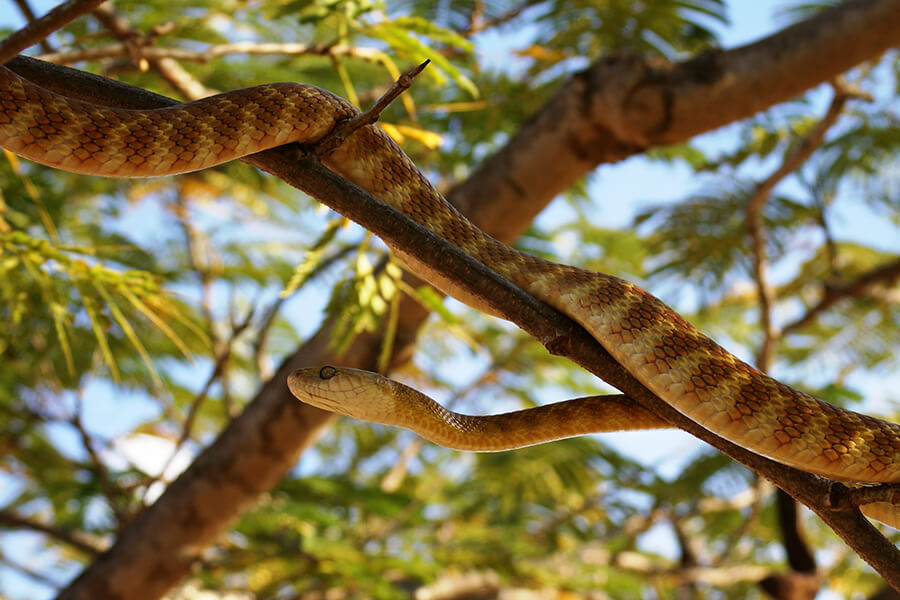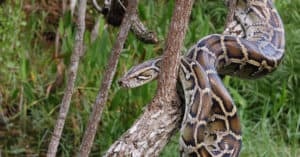Introduction
Tiger serpents (Notechis scutatus) are among one of the most interesting yet been afraid reptiles located in Australia. With their striking look and potent poison, these snakes stimulate a blend of awe and care. Observing tiger snakes in their natural environment can be an electrifying experience for nature enthusiasts, wildlife professional photographers, and researchers alike. However, it's crucial to copperhead snake species approach this venture with regard for the animal's environment and an understanding of safety measures to prevent serpent bites.
In this comprehensive overview, we'll discover exactly how to securely observe tiger snakes in their all-natural habitat. We will certainly cover topics ranging from understanding their behavior and habitats to first aid for snake attacks-- equipping you with understanding to improve your experience while decreasing threats.
What is a Tiger Snake?
Tiger serpents are extremely venomous snakes belonging to Australia, especially Tasmania and seaside regions. They are known for their unique grouped coloration appearing like a tiger's stripes, which can vary from yellowish-brown to dark brownish and even black.
Physical Characteristics
Tiger serpents are tool to large-sized snakes that can grow up to 2 meters long. Their bodies are robust, and they have a broad head that is distinctly broader than their necks.
Habitat Preferences of Tiger Snakes
These reptiles commonly occupy marshes, estuaries, and seaside areas but can additionally be located near freshwater resources like rivers and lakes. Recognizing where these snakes live is essential for any person wanting to observe them safely.
Understanding Tiger Snake Behavior
Are Tiger Snakes Venomous?
Yes, tiger serpents are amongst one of the most poisonous snake species internationally. Their venom includes neurotoxins that can lead to severe clinical problems if bitten.
Behavioral Traits
Tiger snakes are generally reluctant creatures; they prefer to stay clear of human communication. Nevertheless, they can come to be aggressive if intimidated or collared.
Where Can You Find Tiger Snakes?
Tiger Serpent Environment Exploration
To safely observe tiger snakes in their natural environment, it's necessary initially to recognize where they grow. They tend to favor:
- Coastal marshlands Mangroves Swamps Riverbanks
Best Locations for Observation
Some advised places consist of:
- Tasmanian wetlands The coasts of southerly Australia National parks with water bodies
Safety Preventative measures Prior to Observing Tiger Snakes
Understanding the Risks of a Tiger Snake Bite
Although encounters with tiger serpents can be exhilarating, recognizing the risks included is paramount:
Recognize signs of a snake bite: swelling at the site, discomfort emitting from the bite area. Know emergency situation calls: Acquaint on your own with local emergency situation services. Carry a first-aid package especially furnished for serpent bites.First Aid for Serpent Bites: What You Need to Know
Knowing what actions to take if bitten might conserve your life or someone else's:
- Stay tranquility; activity enhances poison spread. Call for clinical assistance immediately. Do not apply ice or effort suctioning.
How to Safely Observe Tiger Snakes in Their Natural Habitat
When you make a decision to observe tiger serpents in the wild:
Dress Appropriately: Use lengthy trousers and durable boots. Use Binoculars: Keep a secure range while observing these reptiles. Avoid Sudden Movements: Quick motions may alarm them. Stay on Established Trails: Avoid roaming right into dense underbrush where exposure is low.Equipment Required for Observation
Essential Gear Checklist
- Binoculars First-aid package especially made for snake bites Field guidebook on Australian reptiles Camera (with zoom ability)
Snake Bite First Aid Package Essentials
A fully equipped emergency treatment kit ought to include:|Product|Function|| -------------------------------|-------------------------------|| Compression bandage|To paralyze the affected area|| Antihistamines|For allergies|| Emergency situation call numbers|Quick accessibility throughout emergency situations|
Interpreting Tiger Serpent Signals
Understanding exactly how tiger serpents communicate via body language aids viewers gauge when it's safe or hazardous:
Common Behaviors
Defensive stance: If curled or elevated off the ground. Retreating habits: When they slowly pull back from possible threats.Dealing With Potential Encounters
Even with precautions taken, an encounter might still take place during your monitoring trip: Click for more info
Remain calm; worrying just heightens risks. Slowly retreat without turning your back on the snake. Make your existence known vocally but stay clear of sudden movements.Frequently Asked Inquiries Concerning Tiger Snakes
1. What should I do if I see a tiger snake?
Remain tranquility; observe from a distance without troubling it.

2. Are child tiger snakes dangerous?
Yes, juvenile tiger serpents are born venomous and might position risks similar to grownups in spite of being smaller.
3. How common are tiger serpent bites?
While incidents take place annually in Australia, fatalities are unusual because of timely therapy availability.
4. Can I maintain a tiger snake as a pet?
Keeping wild tiger snakes as family pets is prohibited in several areas as a result of preservation laws.
5. What does a tiger serpent attack look like?
Bite marks normally reveal two puncture injuries in addition to local swelling and discoloration.
6. How effective is antivenom?
death adder australiaAntivenom treatment is extremely effective when provided prompt after a bite.
Conclusion
Observing tiger serpents in their all-natural habitat offers a thrilling possibility for wildlife lovers yet should be come close to with care and respect for both the creature and its environment. By equipping on your own with understanding about these fascinating reptiles-- including understanding their habits and precaution-- you can enjoy memorable experiences while considerably decreasing threats associated with encounters.

In summary, always prioritize safety and security by preparing appropriately before embarking on any kind of wildlife monitoring expedition-- particularly when managing a few of nature's most poisonous animals like the tiger snake!